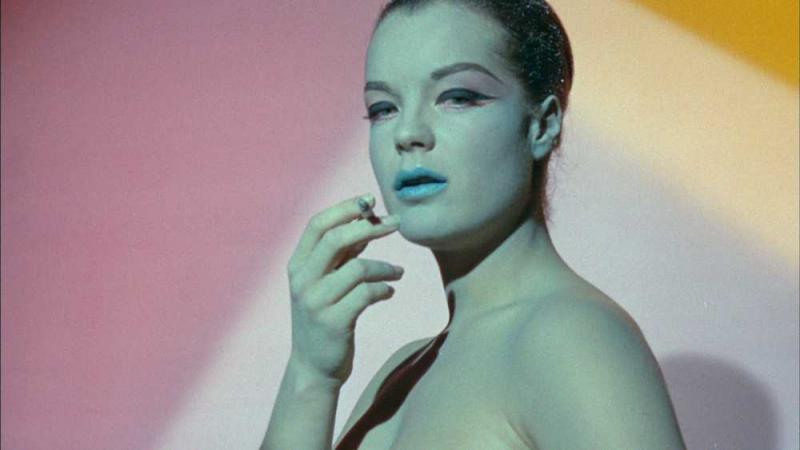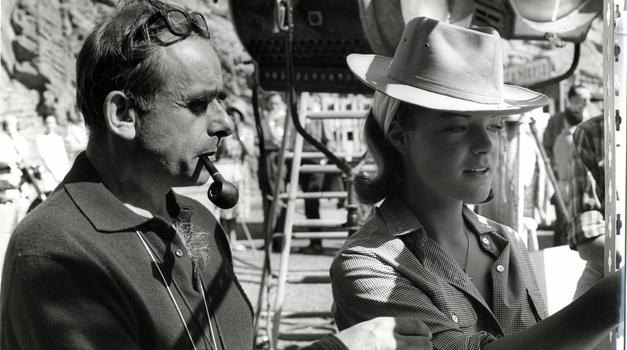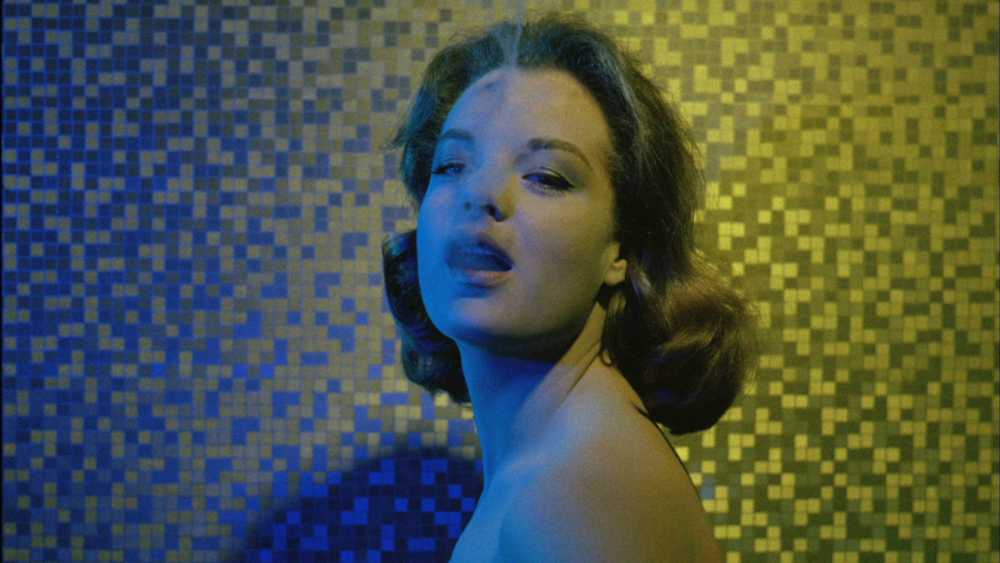Henri-Georges Clouzot's Inferno | reviews, news & interviews
Henri-Georges Clouzot's Inferno
Henri-Georges Clouzot's Inferno
Lost masterpiece or epic folly? After 45 years, the rushes of L'Enfer resurface

When a film shoot is in trouble, with actors dying on set, the heavens opening and other acts of God putting a spanner in the works, it’s usually a gigantic directorial ego which hauls the troubled production over the line. You think of Michael Cimino’s Heaven’s Gate, of Coppola’s Apocalypse Now and above all Herzog's Fitzcarraldo, all films characterised by epic folie de grandeur and flirtation with insanity.
Clouzot is not to be confused with the hapless Inspector of almost the same name. Or at least I don’t think he is. In the Forties and Fifties he was one of France’s leading directors. By the time he came to make L’Enfer, he was in a position to extract from Columbia a limitless budget. He chose to make a film about a man who, domiciled in rural France with his delectable young wife, is unable to quell his irrational jealous rages. Eventually he murders her.
It sounds a modest enough idea for a film. It was shot in and around one lakeside location. And the cast was small, led by Romy Schneider, comely young starlet, as the wife, and Serge Reggiani as her slightly ugly older husband. But Clouzot’s ambition was to create a new cinematic language with which to convey the psychosis of his male character. This involved modernist distortions, weird trippy tricks with mirrors and lenses which must have been great fun to play around with in the lab. In the reels of film stock recently unearthed and forming the core of this documentary, they don’t do a whole lot to convince that Clouzot was onto something.
Maybe he knew it himself. He kept three full-time camera crews on standby at all times, but would leave two of them idle for expensive, morale-sapping swathes of time. The actors became increasingly fractious, though as neither of the leads is any longer around to explain what happened (Schneider was to experience a lonely alcohol-related death aged 43 in 1982), it is left to crew members, including Costa-Gavras, to fill in the blanks. One recalled that, as Clouzot (on set with Schneider, picture right) was an insomniac, he would wake up his colleagues in the small hours to discuss the next day’s shoot. The Nouvelle Vague directors, who espoused the credo that things should happen spontaneously on a film set, may have derided Clouzot as an over-meticulous planner – “I improvise on paper,” he even boasted. But here he didn’t improvise on paper enough. Maybe that’s what hell is in cinema: being stuck on a film which doesn’t know what it’s doing. Scenes were neurotically reshot. Ruggieri was made to spend hours each day running (the husband does a lot of chasing). Eventually he walked. Clouzot carried on regardless until a few days later he had a heart attack when filming a – for 1964 - very daring girl-on-girl kiss between Schneider and a female co-star.
One recalled that, as Clouzot (on set with Schneider, picture right) was an insomniac, he would wake up his colleagues in the small hours to discuss the next day’s shoot. The Nouvelle Vague directors, who espoused the credo that things should happen spontaneously on a film set, may have derided Clouzot as an over-meticulous planner – “I improvise on paper,” he even boasted. But here he didn’t improvise on paper enough. Maybe that’s what hell is in cinema: being stuck on a film which doesn’t know what it’s doing. Scenes were neurotically reshot. Ruggieri was made to spend hours each day running (the husband does a lot of chasing). Eventually he walked. Clouzot carried on regardless until a few days later he had a heart attack when filming a – for 1964 - very daring girl-on-girl kiss between Schneider and a female co-star. The 15 hours of soundless rushes were found in 2005 by Serge Bromberg, a curator of vintage film. Some of it is indeed intriguing. Schneider is always nice to look at in a bikini or less, even when wearing blue lipstick to counterbalance the effects of the colour inversion in the fantasy sequences. In one bit of reversed footage she appears to swallow smoke (picture left). There is one toweringly strong shot in which a steam train bears down on Schneider lying naked on the track. Of the copious illustration of technical wizardry elsewhere in the rushes, you’d have ditched the lot to have the ingenuity of this one explained. The re-acted scenes starring two contemporary actors are also oddly powerful.
The 15 hours of soundless rushes were found in 2005 by Serge Bromberg, a curator of vintage film. Some of it is indeed intriguing. Schneider is always nice to look at in a bikini or less, even when wearing blue lipstick to counterbalance the effects of the colour inversion in the fantasy sequences. In one bit of reversed footage she appears to swallow smoke (picture left). There is one toweringly strong shot in which a steam train bears down on Schneider lying naked on the track. Of the copious illustration of technical wizardry elsewhere in the rushes, you’d have ditched the lot to have the ingenuity of this one explained. The re-acted scenes starring two contemporary actors are also oddly powerful.
The film makes a half-hearted effort to find some sort of consonance between the obsession of the jealous husband and the delusional director. But frustratingly there is no final diagnosis of Clouzot’s affliction. He knew the lake was due to be drained, thus terminating the shoot, but he ploughed obliviously, slowly on. Why? No one’s exactly sure. The film that never was is, generically speaking, a cul-de-sac off a back alley of the cinematic highway. All Terry Gilliam had to show for his version of Don Quixote was Lost in La Mancha, the fly-on-the-wall documentary about how it never got made. But that reveals rather more about its subject than Henri-Georges Clouzot’s Inferno. In effect these are the DVD extras - the deleted scenes, the interviews, the shots of costume fittings. As for the film that should have gone with it, we’re still in the dark.
Henri-Georges Clouzot’s Inferno is on at the ICA until 21 November. Book here.
The future of Arts Journalism
You can stop theartsdesk.com closing!
We urgently need financing to survive. Our fundraising drive has thus far raised £49,000 but we need to reach £100,000 or we will be forced to close. Please contribute here: https://gofund.me/c3f6033d
And if you can forward this information to anyone who might assist, we’d be grateful.

Subscribe to theartsdesk.com
Thank you for continuing to read our work on theartsdesk.com. For unlimited access to every article in its entirety, including our archive of more than 15,000 pieces, we're asking for £5 per month or £40 per year. We feel it's a very good deal, and hope you do too.
To take a subscription now simply click here.
And if you're looking for that extra gift for a friend or family member, why not treat them to a theartsdesk.com gift subscription?
more Film
 Islands review - sunshine noir serves an ace
Sam Riley is the holiday resort tennis pro in over his head
Islands review - sunshine noir serves an ace
Sam Riley is the holiday resort tennis pro in over his head
 theartsdesk Q&A: actor Sam Riley on playing a washed-up loner in the thriller 'Islands'
The actor discusses his love of self-destructive characters and the problem with fame
theartsdesk Q&A: actor Sam Riley on playing a washed-up loner in the thriller 'Islands'
The actor discusses his love of self-destructive characters and the problem with fame
 Honey Don’t! review - film noir in the bright sun
A Coen brother with a blood-simple gumshoe caper
Honey Don’t! review - film noir in the bright sun
A Coen brother with a blood-simple gumshoe caper
 The Courageous review - Ophélia Kolb excels as a single mother on the edge
Jasmin Gordon's directorial debut features strong performances but leaves too much unexplained
The Courageous review - Ophélia Kolb excels as a single mother on the edge
Jasmin Gordon's directorial debut features strong performances but leaves too much unexplained
 Blu-ray: The Graduate
Post #MeToo, can Mike Nichols' second feature still lay claim to Classic Film status?
Blu-ray: The Graduate
Post #MeToo, can Mike Nichols' second feature still lay claim to Classic Film status?
 Little Trouble Girls review - masterful debut breathes new life into a girl's sexual awakening
Urska Dukic's study of a confused Catholic teenager is exquisitely realised
Little Trouble Girls review - masterful debut breathes new life into a girl's sexual awakening
Urska Dukic's study of a confused Catholic teenager is exquisitely realised
 Young Mothers review - the Dardennes explore teenage motherhood in compelling drama
Life after birth: five young mothers in Liège struggle to provide for their babies
Young Mothers review - the Dardennes explore teenage motherhood in compelling drama
Life after birth: five young mothers in Liège struggle to provide for their babies
 Blu-ray: Finis Terrae
Bleak but compelling semi-documentary, filmed on location in Brittany
Blu-ray: Finis Terrae
Bleak but compelling semi-documentary, filmed on location in Brittany
 Oslo Stories Trilogy: Sex review - sexual identity slips, hurts and heals
A quietly visionary series concludes with two chimney sweeps' awkward sexual liberation
Oslo Stories Trilogy: Sex review - sexual identity slips, hurts and heals
A quietly visionary series concludes with two chimney sweeps' awkward sexual liberation
 Sorry, Baby review - the healing power of friendship in the aftermath of sexual assault
Eva Victor writes, directs and stars in their endearing debut feature
Sorry, Baby review - the healing power of friendship in the aftermath of sexual assault
Eva Victor writes, directs and stars in their endearing debut feature
 Blu-ray: Who Wants to Kill Jessie?
Fast-paced and visually inventive Czech comedy
Blu-ray: Who Wants to Kill Jessie?
Fast-paced and visually inventive Czech comedy
 Oslo Stories Trilogy: Love review - freed love
Gay cruising offers straight female lessons in a heady ode to urban connection
Oslo Stories Trilogy: Love review - freed love
Gay cruising offers straight female lessons in a heady ode to urban connection

Add comment